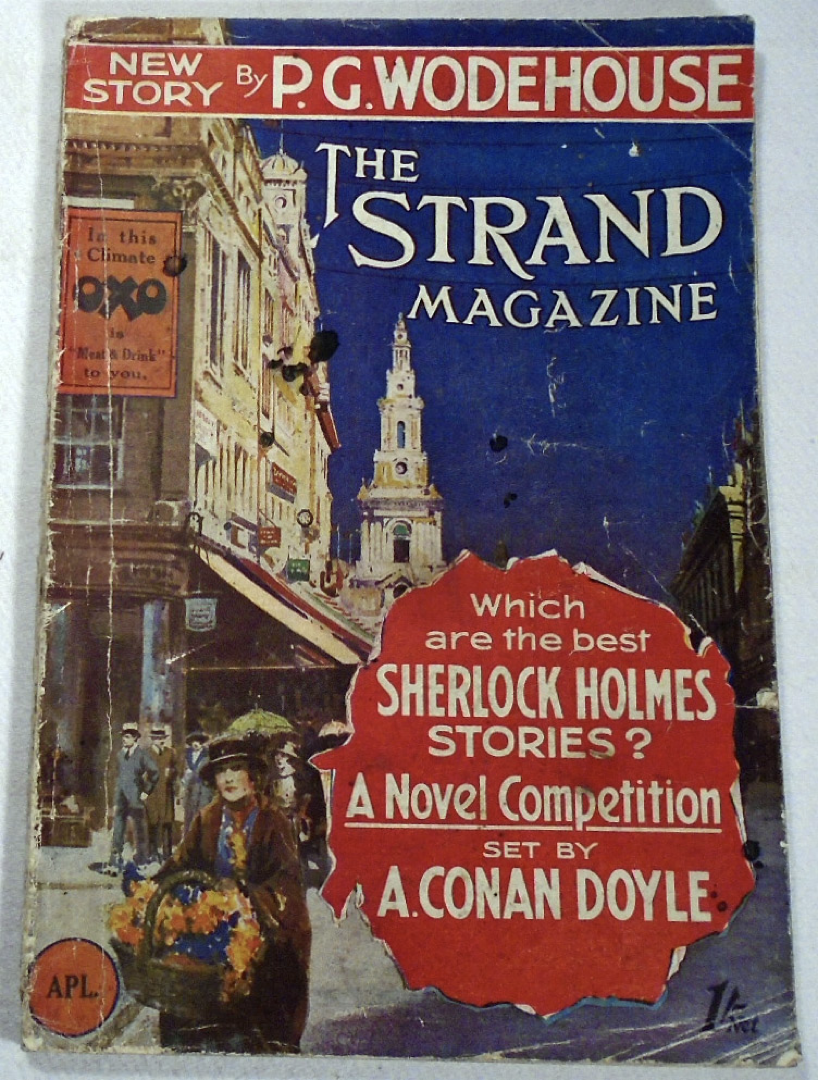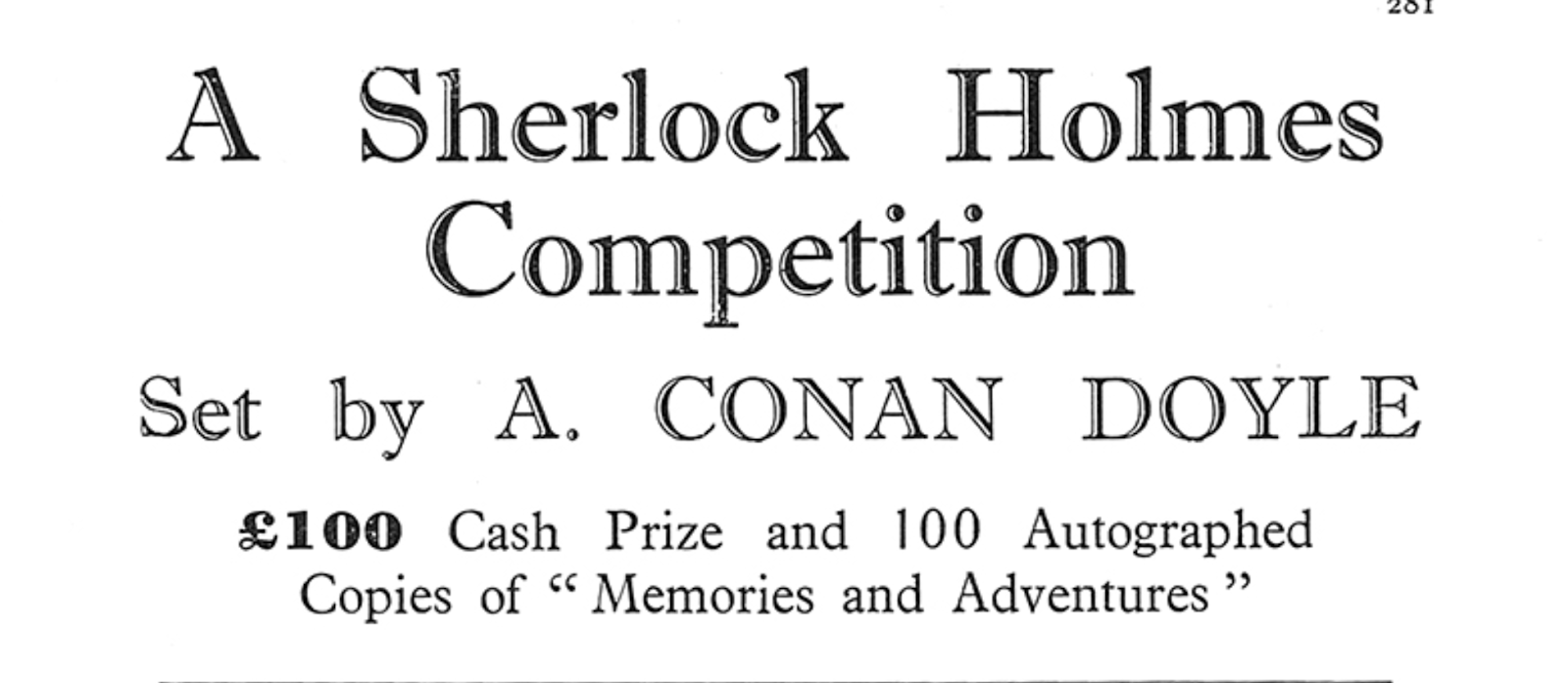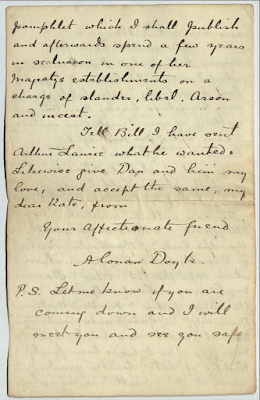Late last year I posted about the 2024 Sherlockian Saturday at the Pratt. That post includes a link to the Youtube recording of the event, and my talk was about R T Norman.
Who was R T Norman? Well, I was reading a list of Conan Doyle's favorite Sherlock stories, and it noted that R T Norman won the competition with the closest guess of ACD's list. Who was this Sherlockian, I wondered. Quite a lot of searching and reading convinced me that he had not previously been written about - or indeed himself published any Sherlockian articles that I could find.
And so, I started to seek him out - not sure if it would be successful, but thankfully I found him. The article on R T Norman was recently published in the Baker Street Journal. Here, I'm posting the original submitted draft, and adding in some extra images that provide deeper details and evidence of the statements in the article.
Who was R.T. Norman?
Matthew D. Hall
The March 1927 issue of the Strand Magazine announced a competition set by Arthur Conan Doyle. The author had selected his best twelve stories from among the first forty-four Sherlock Holmes short stories published, and provided that sealed list to the Editor.
As a "little test of the opinion of the public" Doyle challenged readers to submit their list and see who could divine all twelve stories (the order of the stories was not judged). The winner would receive a prize of £100 and an autographed copy of "Memories and Adventures", with a further 100 readers with the next nearly correct entries also receiving a copy of the signed book.
One thing I really wanted to find was an entry couple from the Strand Magazine - and Ira Matetsky was kind enough to source a copy of the magazine and share an image of the entry coupon. Several people helped by checking their records, including Toronto Public Library, without success. The coupon was included in the advertising section of the magazine - this section at the front of the magazine was removed when issues were bound together into hardcover volumes.
The Strand article carried a numbered illustration from each of the eligible stories, and a coupon was provided in the magazine for entrants to number the twelve stories for their entry. Given these competition parameters, there were 21,090,682,613 possible entry combinations of twelve stories!
Three months later, the June 1927 edition of the Strand announced that "The prize of £100 has been won by Mr. R. T. Norman, Spring Hill, Wellingborough. Northants, who correctly named ten stories of the twelve selected by Sir Arthur Conan Doyle as the best."
Seven entrants correctly guessed nine of the stories, and many guessed eight, and autographed books were distributed accordingly. The announcement was followed by a brief essay by Doyle rationalizing his selection of the twelve best Sherlock Holmes stories, and sharing the list : The Speckled Band ; The Red-Headed League ; The Dancing Men ; The Final Problem ; A Scandal in Bohemia ; The Empty House ; The Five Orange Pips ; The Second Stain ; The Devil's Foot ; The Priory School ; The Musgrave Ritual ; The Reigate Squires. This list has been the source of much Sherlockian discussion, collected and published with accompanying essays (for example 'The Baker Street Dozen' ) and stimulated a number of other lists achieved via debate and voting.
Who was this victorious but almost anonymous R. T. Norman? Surely someone who could best estimate Doyle's favorite Holmes stories is worthy of Sherlockian recognition. The Strand announcement did not feature a photograph or an interview with Norman, and the only press attention was a brief note in Norman's local Northampton Mercury that provided no other information. For Norman it appears there was 15 minutes of Sherlockian fame, and a handy check worth about US$5,000 in 2024.
Research in newspaper articles and official records reveals that R. T. Norman was Raymond Thomas Norman (1889-1956), and at the time of winning the Sherlock Holmes Competition he was a Lecturer in Classics and Ancient History at Durham University .
Norman was born in 1888 in Wellingborough (indexed as Thomas Raymond Norman but appearing as R. T. throughout his life), his father being known for founding Norman's Store in the town. R.T. Norman was educated at Wellingborough School, and attended the University of London (BA 1908, MA 1913). The 1911 census shows Norman listed as a schoolmaster at Kent College, Canterbury.
When war broke out, Norman was "on the point of going to Oxford University" but joined the Inns of Court Rifles in London and entered the Officer Training Corps. He was commissioned into the 7th Cheshires and served in Egypt and Palestine before being moved to France in 1918. There, Norman was transferred to the 102nd Light Trench Mortar Battery, and was engaged in action on the Western Front in the last days of the war. In January 1919 newspapers carried an announcement that R. T. Norman was awarded the Belgian Croix de Guerre "for gallantry during the fighting at Menin and on the Scheldt in October 1918".
Following repatriation on the conclusion of the war, Norman enrolled at Balliol College at the University of Oxford as a relatively senior student aged over thirty, earning an MA. Norman was known for his sporting prowess, representing his County in both tennis and field hockey, and he continued these activities at Oxford where he earned a Blue for hockey. Photographs of the Balliol Hockey XI and Tennis VI from 1919 to 1922 show a clean-shaven man with an intense gaze and athletic appearance (see for example Figure 1).
Figure 1. Cropped image of R. T. Norman from photograph of the 1921-1922 Balliol College hockey team, Oxford University. (Balliol archives PHOT 24.23). This photograph has been reproduced by kind permission of Gillman & Soame photographers.
Following graduation, Norman appears to have embarked upon his career as Lecturer in Classics and Ancient History at Durham University, a career that last thirty years. 1927 was a banner year for Norman. Along with winning £100 in the Sherlock competition, he married fellow Wellingborough local Bessie Burkitt . Together, they had two daughters Ann (1932) and Elizabeth (1936, called Buffy), and lived in Durham.
Northampton Mercury - Friday 02 September 1927
A Durham University archives photograph taken outside Durham Castle in 1927 captures four members of a dining club called 'the Slowcoach Club’ including Raymond Norman (Figure 2). Perhaps his relaxed smile is a reflection of the prize money headed to the lunch table.
Figure 2. Durham Castle 1927 the Slowcoach Club. Left to right: E.F. Baxter, R.T. Norman, G.S. Conway and B. Colgrave. From Durham University Library and Collections CAST/B/16. This photograph has been reproduced by permission of Durham University. (Underneath I've placed a photo of the site of that photograph).
Norman continued at Durham University till retirement, living at 26 North Bailey, Durham. The 1939 Register (effectively a census) was performed to produce identity cards and ration books for wartime England, and Norman (with his family) is listed as as Lecturer in Ancient History and Philosophy.
Norman's involvement in Durham University life (social and academic) evident in the pages of the Durham University Journal. After retirement, the Normans relocated to 18 Hatton Ave, Wellingborough where he died suddenly on July 13th 1956, aged 67 years. Raymond T. Norman was cremated, and a final resting place has not been identified.
Northamptonshire Evening Telegraph - Monday 16 July 1956
Somewhere out there are 101 signed copies of Memories and Adventures, prizes from the Sherlock Holmes Competition. It would be interesting to know whether those inscriptions bear any specific reference to the competition. We don't know if R.T. Norman was a Sherlockian, and no evidence of articles by him on the topic have been identified. Nevertheless, his success in the 1927 competition predicting Conan Doyle's best stories warrants his place in Sherlockian memory.
------
I sincerely hope that a descendant sees this post - if so please get in touch, as I'd love to learn more about R T Norman and learn if the book is still in the family ! (email : cispt2 at gmail dot com)






































